Secrecy Rate of Resource-Constrained Mobile Relay Model under Two-Way Wiretap Channel
Abstract
:Featured Application
Abstract
1. Introduction
2. Materials and Methods
2.1. System Model
2.1.1. Mobility Model
- (1)
- The mobile relay returns to the starting point.
- (2)
- The mobile relay visits all important positions.
- (3)
- There is no subtour in the planned path.
2.1.2. Uplink Signal Model
2.1.3. Downlink Signal Model
2.2. Achievable Secrecy Rate Problem Formulation
2.3. Local Optimal Solution to P1
2.3.1. Convex Approximation via Taylor Expansion
2.3.2. Optimal Solution of (Namely ) and
2.3.3. Local Optimal Solution of s
| Algorithm 1 Computing the neighborhood |
|
2.3.4. Summary of Algorithm
| Algorithm 2 Proposed local optimal solution to P1 |
|
3. Results
4. Discussion
5. Conclusions
Author Contributions
Funding
Acknowledgments
Conflicts of Interest
Abbreviations
| MINLP | Mixed integer nonlinear programming |
| UAV | Unmanned aerial vehicles |
| CSI | Channel state information |
| SNR | Signal-to-noise ratio |
| NSM | Neighborhood search method |
Appendix A
Appendix B
References
- Lai, L.; Gamal, E.H. The relay eavesdropper channel: Cooperation for secrecy. IEEE Trans. Inf. Theory 2008, 54, 4005–4019. [Google Scholar] [CrossRef]
- Awan, Z.H.; Zaidi, A.; Vandendorpe, L. Secure transmission over parallel relay channel. IEEE Trans. Inf. Forensics Secur. 2012, 7, 359–371. [Google Scholar] [CrossRef] [Green Version]
- Yuksel, M.; Erkip, E. Secure communication with a relay helping the wire-tapper. In Proceedings of the IEEE Information Theory Workshop, Lake Tahoe, CA, USA, 2–6 September 2007; pp. 595–600. [Google Scholar]
- Awan, Z.H.; Zaidi, A.; Vandendorpe, L. Multiacess channel with partially cooperating encoders and security constraints. IEEE Trans. Inf. Forensics Secur. 2012, 8, 1243–1254. [Google Scholar] [CrossRef] [Green Version]
- Zaidi, A.; Vandendorpe, L. coding schemes for relay-assisted information embedding. IEEE Trans. Inf. Forensics Secur. 2009, 4, 70–85. [Google Scholar] [CrossRef]
- Wang, S.; Xia, M.; Huang, K.; Wu, Y.-C. Wirelessly powered two-way communication with nonlinear energy harvesting model: Rate regions under fixed and mobile relay. IEEE Trans. Wirel. Commun. 2017, 16, 8190–8204. [Google Scholar] [CrossRef]
- Xu, S.; Song, X.; Gao, Y.; Li, S.; Cao, i.; Xie, Z. Secrecy-Enhancing Design for Two-Way Energy Harvesting Cooperative Networks with Full-Duplex Relay Jamming. China Commun. 2021, 5, 273–284. [Google Scholar] [CrossRef]
- Wu, M.R.; Song, Q.Y.; Guo, L.; Jamalipour, A. Charge-Then-Cooperate: Secure Resource Allocation for Wireless-Powered Relay Networks With Wireless Energy Transfer. IEEE Trans. Vehicular Tech. 2021, 70, 5088–5093. [Google Scholar] [CrossRef]
- Yan, S.; Wang, X.; Li, Z.; Li, B.; Fei, Z. Cooperative Jamming for Physical Layer Security in Hybrid Satellite Terrestrial Relay Networks. China Commun. 2019, 12, 154–164. [Google Scholar] [CrossRef]
- Lu, X.; de Lamare, R.C. Opportunistic Relaying and Jamming Based on Secrecy-Rate Maximization for Multiuser Buffer-Aided Relay Systems. IEEE Trans. Vehicular Tech. 2020, 69, 15269–15283. [Google Scholar] [CrossRef]
- Bliss, M.; Michelusi, N. Trajectory Optimization for Rotary-Wing UAVs in Wireless Networks with Random Requests. In Proceedings of the 2019 IEEE Global Communications Conference (GLOBECOM), Waikoloa, HI, USA, 9–13 December 2019; pp. 1–5. [Google Scholar]
- Zhang, J.Y.; Wu, F.H.; Zhu, Y.T.; Xiao, L.; Yang, D.C. Joint trajectory and power optimization for mobile jammer-aided secure UAV relay network. Veh. Commun. 2021, 30, 10035. [Google Scholar]
- Qingqing, W.; Yong, Z.; Rui, Z. Joint Trajectory and Communication Design for Multi-UAV Enabled Wireless Networks. IEEE Trans. Wireless Commun. 2018, 17, 2109–2121. [Google Scholar]
- Wang, S.; Xia, M.; Wu, Y.-C. Joint Communication and Motion Energy Minimization in mobile ground vehicle Backscatter Communication. In Proceedings of the ICC 2019—2019 IEEE International Conference on Communications (ICC), Shanghai, China, 20–24 May 2019; pp. 1–6. [Google Scholar]
- Bondy, J.A.; Murthy, U. Graph Theory with Applications; Elsevier: New York, NY, USA, 1976. [Google Scholar]
- Mei, Y.; Lu, Y.H.; Hu, Y.; Lee, C. Deployment of mobile robots with energy and timing constraints. IEEE Trans. Robot. 2006, 22, 507–522. [Google Scholar]
- Shu, Y.; Yousefi, H.; Cheng, P.; Chen, J.; Gu, Y.; He, T.; Shin, K.G. Near-optimal velocity control for mobile charging in wireless rechargeable sensor networks. IEEE Trans. Mobile Comput. 2016, 15, 1699–1713. [Google Scholar] [CrossRef] [Green Version]
- Bertsekas, D.P. Network Optimization: Continuous and Discrete Models; Athena Scientific: Nashua, NH, USA, 1998. [Google Scholar]
- Gendreau, M.; Potvin, J.Y. Handbook of Metaheuristics, 2nd ed.; Springer: New York, NY, USA, 2010. [Google Scholar]
- Neumann, F.; Wegener, I. Randomized local search, evolutionary algorithms, and the minimum spanning tree problem. Theor. Comput. Sci. 2007, 378, 32–40. [Google Scholar] [CrossRef] [Green Version]
- Goldstein, L.; Waterman, M. Neighborhood size in the simulated annealing algorithm. Amer. J. Math. Manage. Sci. 1988, 8, 409–423. [Google Scholar]
- Boyd, S.; Vandenberghe, L. Convex Optimization; Cambridge Univ Press: Cambridge, UK, 2004. [Google Scholar]
- Laporte, G. The traveling salesman problem: An overview of exact and approximate algorithms. Eur. J. Oper. Res. 1992, 59, 231–247. [Google Scholar] [CrossRef]
- Belotti, P.; Kirches, C.; Leyffer, S.; Linderoth, J.; Luedtke, J.; Mahajan, A. Mixed-integer nonlinear optimization. Acta Numer. 2013, 22, 1–131. [Google Scholar] [CrossRef] [Green Version]
- Held, M.; Karp, R.M. A dynamic programming approach to sequencing problems. J. Soc. for Indust. Appl. Math. 1962, 10, 196–210. [Google Scholar] [CrossRef]
- Ben-Tal, A.; Nemirovski, A. Lectures on Modern Convex Optimization (MPS/SIAM Series on Optimizations); SIAM: Philadelphia, PA, USA, 2013. [Google Scholar]
- Wang, S.; Xia, M.; Wu, Y.-C. Multi-pair two-way relay network with harvest-then-transmit users: Resolving pairwise uplink-downlink coupling. IEEE J. Sel. Topics Signal Process. 2016, 10, 1506–1521. [Google Scholar] [CrossRef] [Green Version]
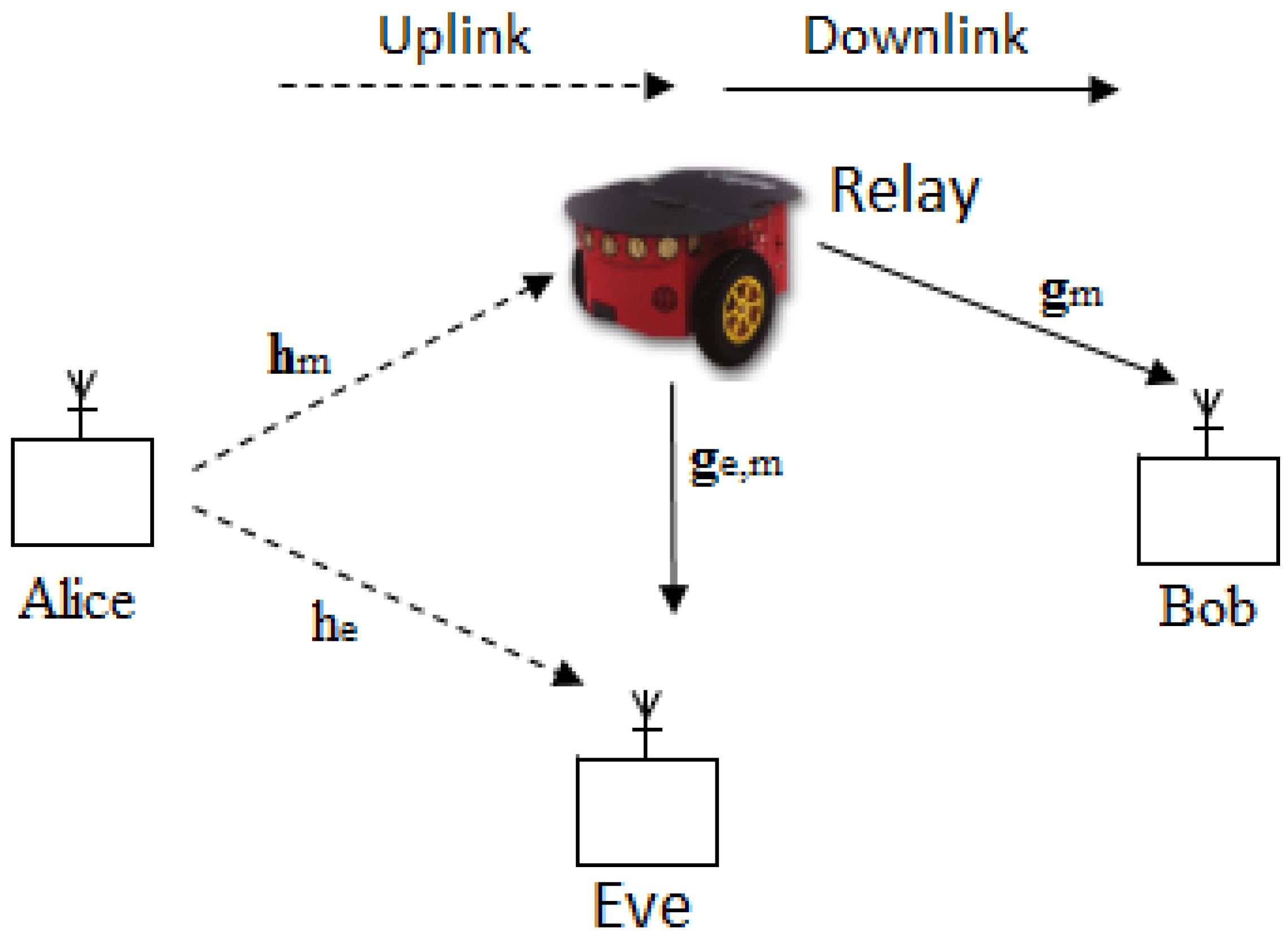
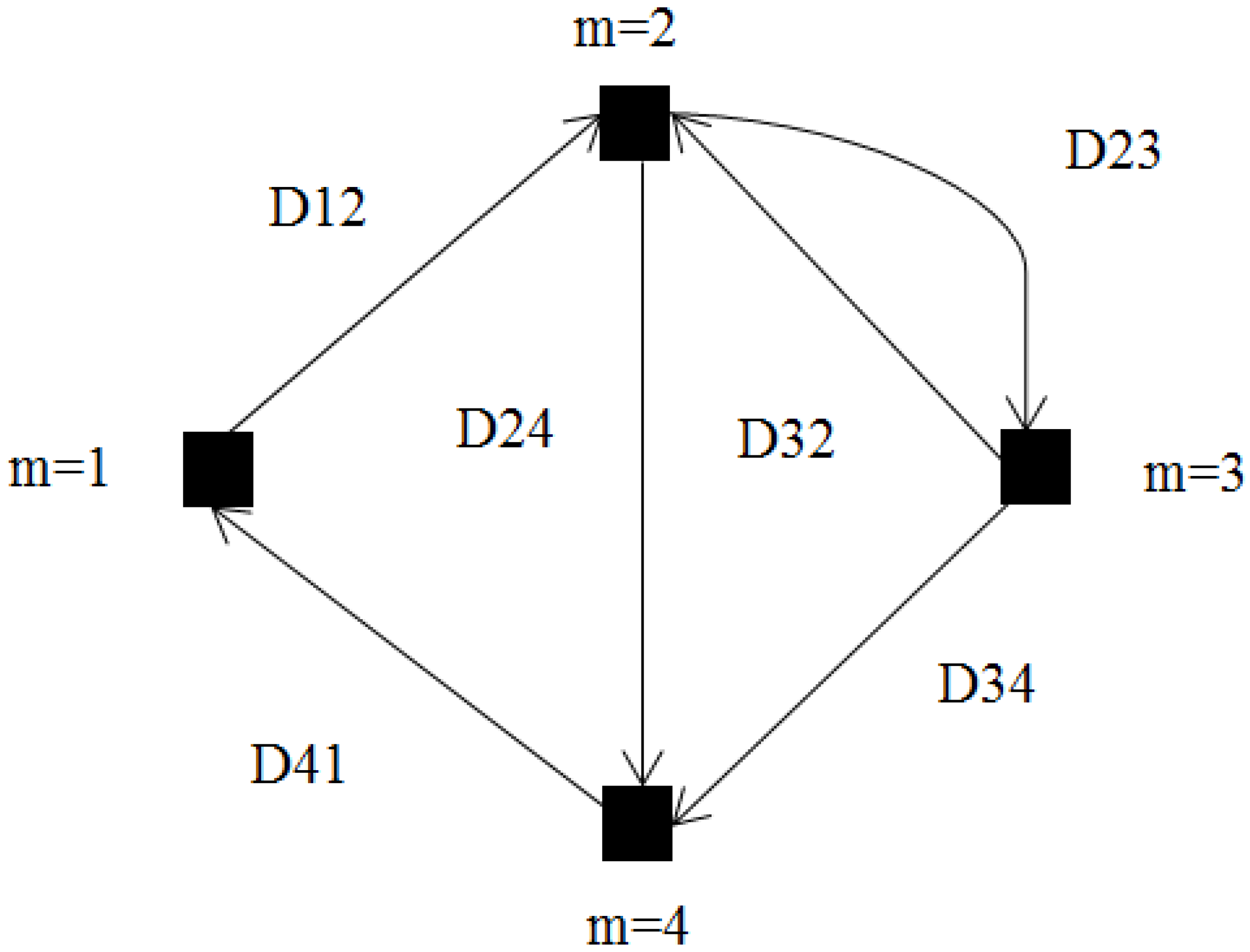
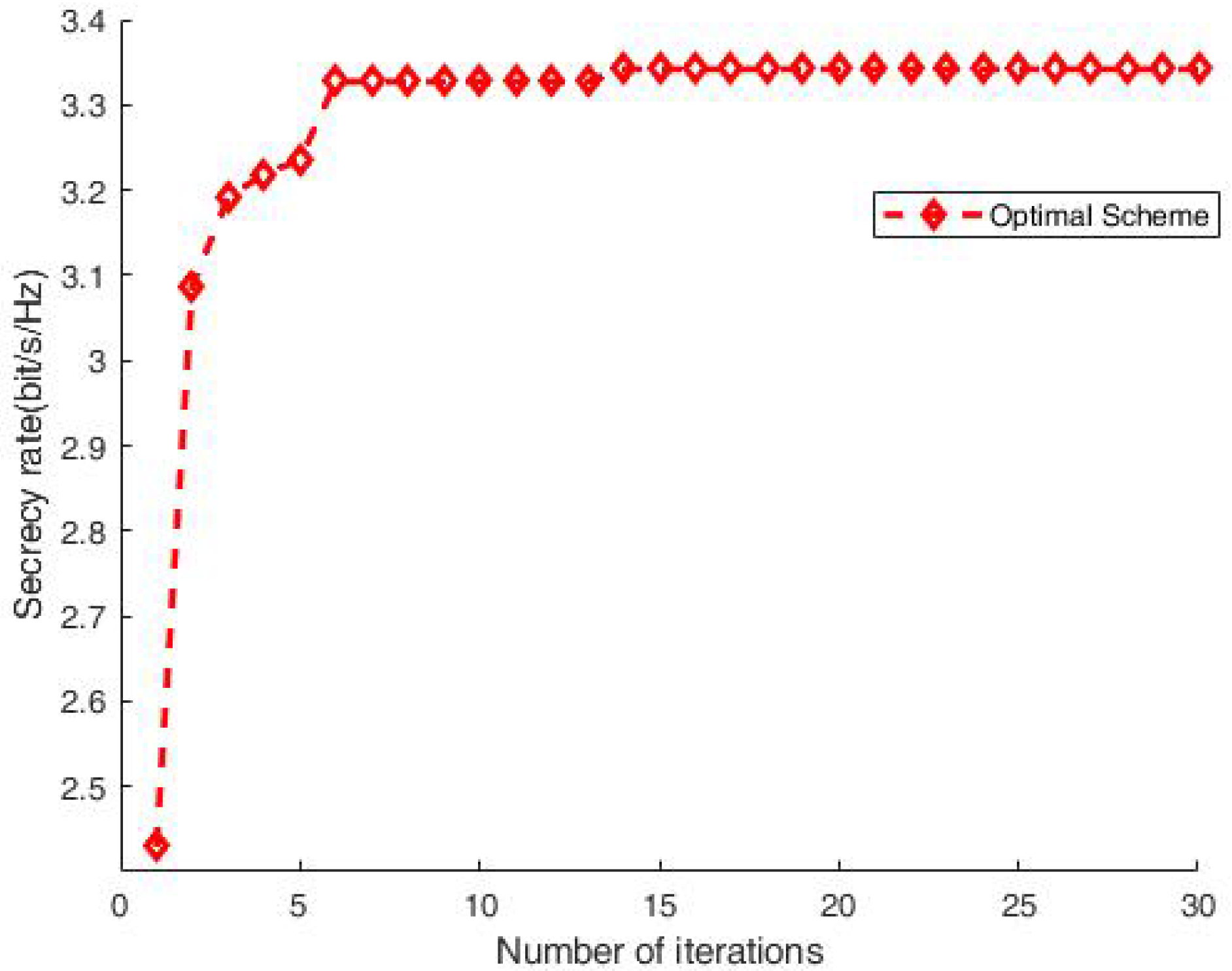
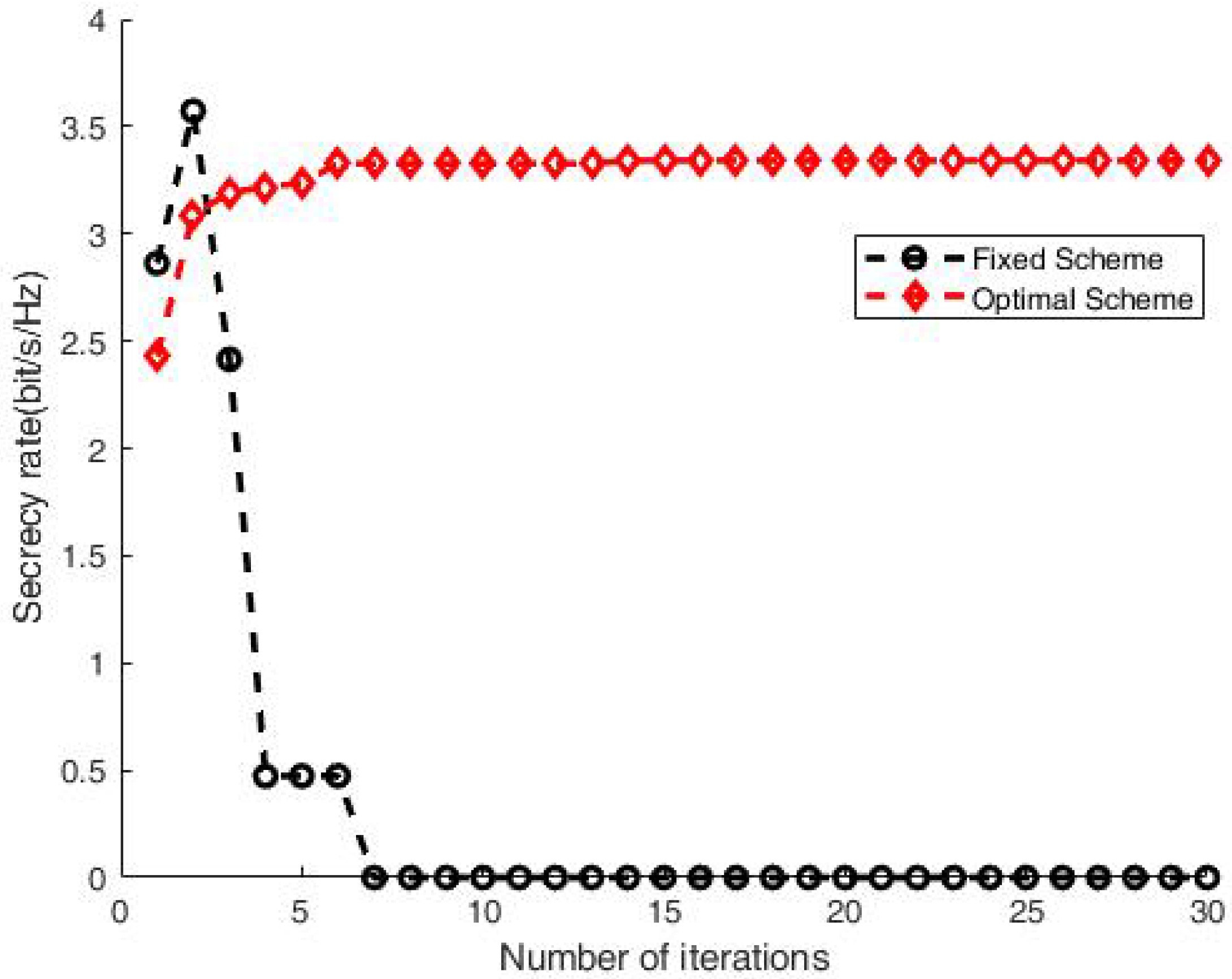
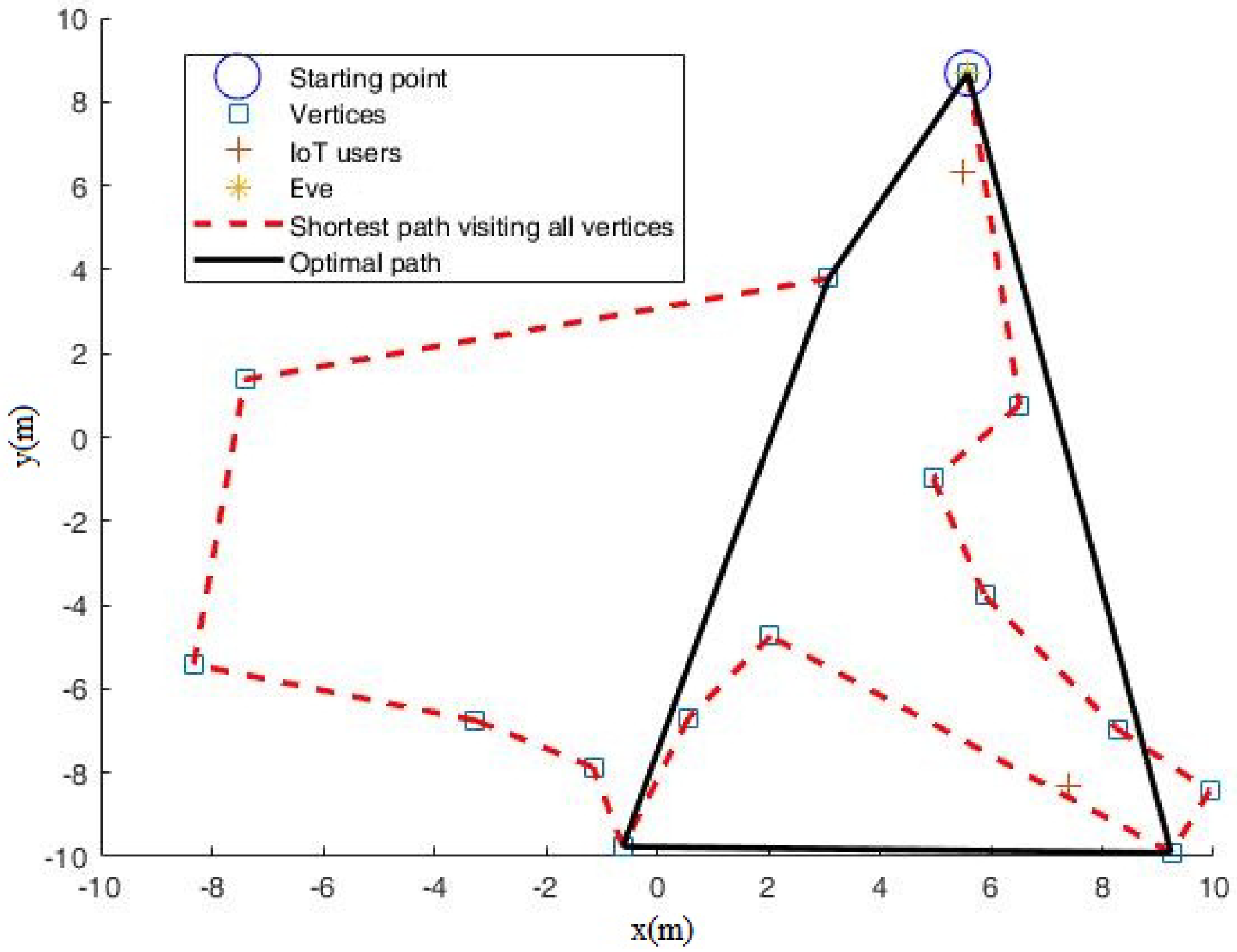
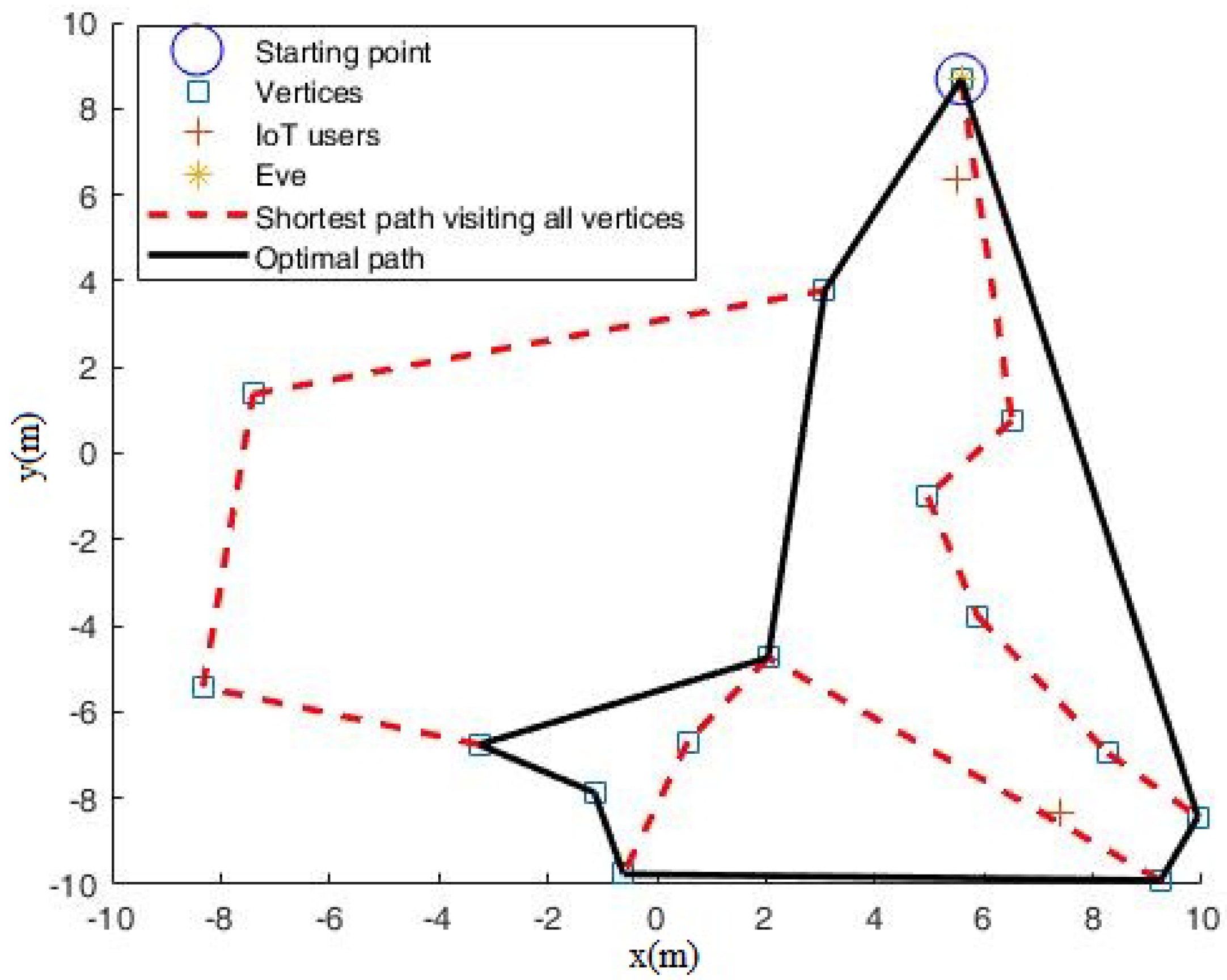
Publisher’s Note: MDPI stays neutral with regard to jurisdictional claims in published maps and institutional affiliations. |
© 2021 by the authors. Licensee MDPI, Basel, Switzerland. This article is an open access article distributed under the terms and conditions of the Creative Commons Attribution (CC BY) license (https://creativecommons.org/licenses/by/4.0/).
Share and Cite
Wang, H.; Wang, Y.; Wu, M. Secrecy Rate of Resource-Constrained Mobile Relay Model under Two-Way Wiretap Channel. Appl. Sci. 2021, 11, 9866. https://doi.org/10.3390/app11219866
Wang H, Wang Y, Wu M. Secrecy Rate of Resource-Constrained Mobile Relay Model under Two-Way Wiretap Channel. Applied Sciences. 2021; 11(21):9866. https://doi.org/10.3390/app11219866
Chicago/Turabian StyleWang, Hongmei, Yinchun Wang, and Meng Wu. 2021. "Secrecy Rate of Resource-Constrained Mobile Relay Model under Two-Way Wiretap Channel" Applied Sciences 11, no. 21: 9866. https://doi.org/10.3390/app11219866
APA StyleWang, H., Wang, Y., & Wu, M. (2021). Secrecy Rate of Resource-Constrained Mobile Relay Model under Two-Way Wiretap Channel. Applied Sciences, 11(21), 9866. https://doi.org/10.3390/app11219866






